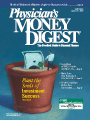Publication
Article
Physician's Money Digest
West Point: Follow the River to Yesterday's America
Author(s):
Half Moon
The Hudson River, its mouth emptying outinto the Atlantic through New York City,is a sort of Dutch treat. Henry Hudson,the English explorer hired by the Netherlands, firstsailed his up the broad stream in 1609looking for a water route to India. The Dutch government,unimpressed, eventually swapped his"New Amsterdam"for some tiny, British-ownedislands in the Caribbean.
This Dutch loss has become a gain for thetourists of the world—Manhattan, for starters.And, up the Hudson, a short day trip fromManhattan, lies a well-preserved historical capsuleof the American Revolution, and a grippingpeek into America's long military tradition, representedby the 200-year-old US MilitaryAcademy at West Point (USMA).
A PRESERVED HISTORY
With its gray barracks, classrooms, and labsrising up on a high bluff on the Hudson's westbank, the USMA looks much like what it was in1776: a fort guarding the Hudson and keeping theBritish and Indians from invading southward. Itstill displays links of the heavy metal chain oncestretched across the river to keep Indian warcanoes and barges full of redcoats at bay.
The best place to start your West Point tour isthe Visitor Center (845-938-2638; www.usma.edu/visiting.asp), where free literature lists paradetimes. Friday and Saturday visits usually offer thechance to see not only cadets marching, but alsoarmy athletes in team competitions. The autumn's5 home football games in Michie Stadium arealways noisy and colorful, preceded by a fulldress cadet parade, and featuring a cannon and alive mule mascot on the sidelines.
The West Point Museum (845-938-3590) is afree, don't miss attraction. It houses more than45,000 items of military lore, including Hitler'spistol and the firing pin from the atomic bombthat fell on Nagasaki. While on campus, youwon't be able to avoid statues of West Pointheroes like Generals MacArthur, Patton, Grant,and Eisenhower, which are scattered throughoutthe campus generously. In addition, there arealso plenty of romantic spots on campus toenjoy, such as Kissing Rock.
Tip:
After a day of learning and exploring, treatyourself to a meal at the Hotel Thayer (845-446-4731). Not only will your taste buds be satisfied,but the dining room boasts a beautiful view ofthe Hudson sweeping southwards that will pleaseall of your senses. Another great place to eat inthe area is the Culinary Institute of America(CIA) in nearby Hyde Park (800-888-7850).TheCIA graduates dozens of fine young chefs eachyear. Several student-staffed, prize-winning gourmetrestaurants are open to the public. TheApple Bakery Café in the main building is anideal place to frequent if you're only looking fora quick and tasty snack.
OUTSIDE THE PERIMETERS
There are also wonderful historical sites outsideof campus to visit during your trip down theHudson. Hyde Park (845-229-9115) is the ancestralhome of Franklin Delano Roosevelt, theonly 4-term US President. He and his FirstLady, Eleanor, are both buried in the rose gardenon the estate's grounds. The home is also the siteof his Presidential Library, which is filled withdocuments, photos, and memorabilia relating tothe New Deal, the American Depression, andUS participation in World War II.
World War I history comes alive at the nearbyOld Rhinebeck Aerodrome (845-752-3200; www.oldrhinebeck.org). This is genuine Red Baroncountry. Wood-and-canvas fighter planes line thelanding strip, and on summer weekends theytake to the air to stage mock dogfights. Frontseat, open cockpit rides are possible, so bringgoggles and a long, white silk scarf. Antiquelovers might want to stay at the Beekman Armsin Rhinebeck (845-876-7077; www.beekmandelamaterinn.com), where rooms are furnished with4-poster beds, and Washington and Lafayette'snames appear in the guest book, which dates backto when the inn first opened in 1766.
Another place to visit is The Hasbrouck House(845-562-1195). This is the house where GeorgeWashington and his wife Martha lived during thefinal years of the American Revolution. It is nowopen as a museum, and is furnished with antiquesof the era. Nearby is a reconstruction of the NewWindsor Cantonment (845-561-1765), the wintercamp where the colonial troops garrisonedbetween forays into the field. It offers a fascinatinglook into the hardships American patriotsendured as they fought to defeat the British.
Toasting their victory, America's troops didn'thave to go far for a drink. This Hudson Riverarea is America's oldest winemaking region.After arriving in the 1600s, French Huguenotsettlers began planting vines. Today, grape clusterroad signs mark the 60-mile ShawangunkWine Trail. And if you've always wanted to checkout the earliest commercial winery, take a half-hourdrive to Washingtonville, where you willfind the Brotherhood Winery (845-496-3661).Founded in 1839, this winery boasts the country'slargest cellars. For free literature on visitingthe Hudson River Valley call toll-free (800-762-8686) or log on at www.orangetourism.org.
